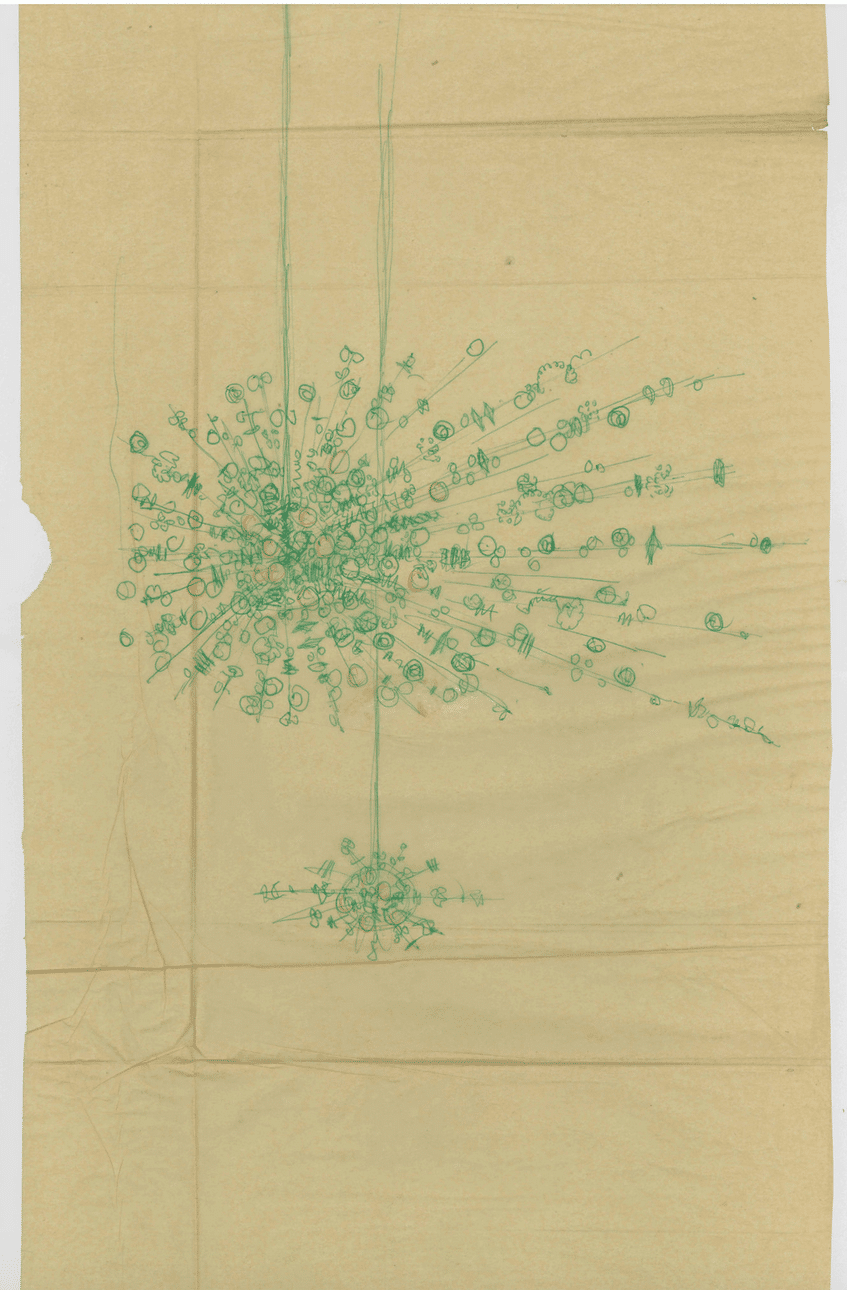The Metropolitan Opera House, NYC: Invisible guests
The purpose of poetry is to remind us
how difficult it is to remain just one person,
for our house is open, there are no keys in the doors,
and invisible guests come in and out at will.
– Czesław Miłosz, from Ars Poetica?
My father, Tad Leski, was an architect and designer for Wallace K. Harrison on many projects, including the Albany Cultural Education Center, the four Harrison & Abramovitz towers on Sixth Avenue (Time & Life, Standard Oil, McGraw Hill, and Celanese Headquarters) and the Metropolitan Opera House in New York. He taught me about how ideas can arrive unexpectedly through the design process. Invisible guests, unpredictable occurrences or accidents can spur a new intention. In recognising this one can take an improvisational shift of direction in the project. The design of the Chandeliers for the Metropolitan Opera House is such an example.

My father was working on an interior perspective sketch of its auditorium for a design meeting of Wallace K. Harrison, John D. Rockefeller, Founder of Lincoln Center, and Rudolf Bing, the General Manager of the Metropolitan Opera, when an accident happened. He was very characteristically making a sketch with mixed media and grabbing anything that was in front of him to visually communicate to those at the meeting, when in the process of adding some finishing touches with paint, a splat fell upon his page.
The group had other intentions: my father’s intention was not to splash the page with paint; Harrison’s intention was to respect Rockefeller’s intention, which was to do a traditional chandelier, and a conservatively designed building. But the unexpected occurrence asserted consensus for a new intention for the design through this sketch that looked like fireworks.
At the same time, the scientific debate about the origin of the universe was being played out in the news. Photos from radio telescopes showed the first material evidence of the Big Bang: where only black space was previously visible with optical telescopes, radio telescopes showed CMB –or Cosmic Microwave background – a glow of radiation could be seen between the stars.
The spat of white paint had a geometry similar to the cosmic explosive geometry seen in the news and resonated as an image for a new cultural center for New York.
More drawings for the Metropolitan Opera House, and other projects on which Tad Leski worked, can be found on the Instagram account dedicated to the architect and his career. Find it here.
